- October 06, 2023
- By Maggie Haslam
THIS SOFA HAS SEEN A LOT.
Covered in an ancient damask print, the well-worn couch has been parked for years in the lobby of WMUC-FM against a graffitied wall plastered with schedules and concert flyers. It’s roomy enough for DJs working the graveyard shift at the University of Maryland’s college radio station to catch a nap before morning classes or for bands waiting to perform in the station’s “live room.” Its permadented seats and patinaed armrests have endured countless staff meetings, greasy residue from takeout containers and more than a few meet-cutes, its crevices a catchment for guitar picks, misplaced blunts and crumpled playlists.
WMUC’s couch is one note in the soundtrack of Maryland college radio, but it doesn’t begin to capture all of its greatest hits: the station’s arduous road to an FM license; the indie singers and punk bands that graced its studios; scripts being lit on fire; countless hours of reporting historic elections, riots and college sports; and even a promo spot by a mop-topped Brit.
“It was one of the fundamental experiences of my life, and I’m still close with a lot of people from that time,” says former DJ and program director Jay Kernis ’74, who went on to found NPR’s “Morning Edition” and “Weekend Edition” and now is a “CBS Sunday Morning” producer. “You immediately recognize your tribe—like, ‘Oh my God, these are my people.’”
On the 75th anniversary of WMUC—and with stations and listeners around the globe celebrating World College Radio Day today—Terp turned to decades of station alums to chronicle milestones and mishaps, culture and influence, and its enduring community.
1950s - 1970s
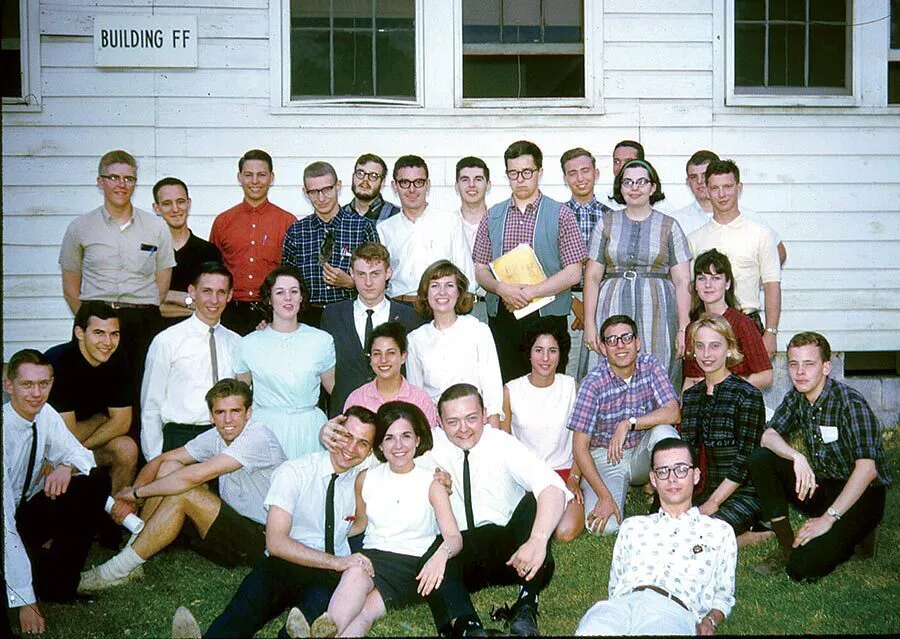
START ME UP // College radio at UMD began in 1942 as the Old Line Network, an effort cut short by the draft of hundreds of Maryland men into World War II. Students took to the AM airwaves again from a classroom in the speech department on Oct. 11, 1948—this time, as WMUC AM 650. It lasted only three days because of poor transmission but was revived the following year after the low-power signal was routed through electrical wiring throughout dorms, dining halls and, eventually, Fraternity Row.
The station did stints in the basement of Silvester Hall (now Baltimore Hall) and a repurposed shower room in Calvert Hall before moving in 1953 to one of the temporary Army barracks located in the former “Gulch” area on South Campus. Spinning Top 40 hits, AM 650 grew in popularity on campus, where it surpassed the ratings of every commercial station in the region. That fact—confirmed after Frank Zappala ’68 convinced Arbitron to do a survey for free—helped the station sell airtime to local and national companies itching for the college demographic. “I would throw on a sport coat and just start knocking on doors,” he says. “The beer companies were begging to advertise, but we couldn’t get that approved.”
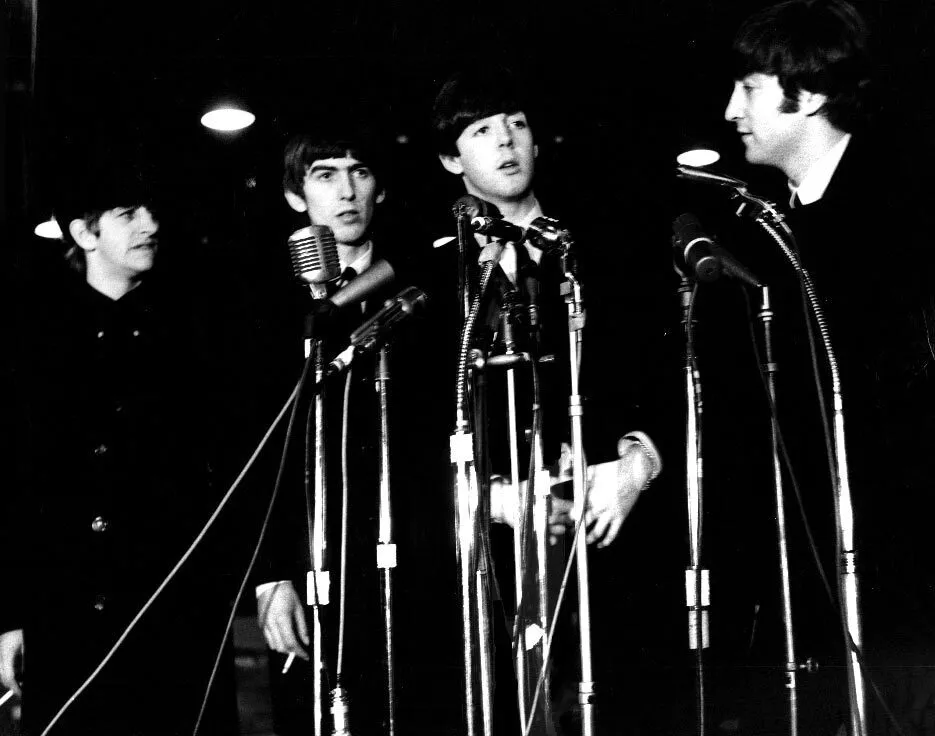
BRITISH INVASION // The day of the Beatles’ first
U.S. concert in February 1964, Bill Seaby ’64, Paul Palmer ’64, Fred
Krautwurst ’64 and Alan Batten ’65 lugged an Ampex portable tape
recorder, a mic stand and about 100 feet of cord down to a press
conference at the Washington Coliseum. When it ended, Seaby and Palmer
jumped onto the stage and in a bold move asked John Lennon to record a
promo spot for the station.
“He told us he wasn’t allowed to because it could cause some bad feelings for the other stations, but we told him we were just a little campus radio station,” recalls Seaby. “I scribbled what he needed to say on a notecard, and he went ahead and did it—and then it was over.” With the tagline, “Get listening, kids!” it’s one of the only known station IDs that Lennon ever recorded in the U.S. “My biggest regret was The Diamondback reporter who came with us lost the photograph he took of us on stage.”

BREAKING NEWS // While WMUC reporting has spanned everything from presidential elections to a dairy cow stranded on the seventh floor of a women’s dorm in a 1960s prank, it provided an invaluable historical record of the unrest over the Vietnam War. Clutching a tape recorder and microphone, Peter Ferrara ’73 covered the 1970 riots on Route 1 then raced back to the station to transfer his reports onto a reel-to-reel for broadcast. The Associated Press caught wind of his efforts and soon paid him a stipend for each report he filed. When the state again sent in the National Guard the following year, WMUC announced troops’ positions on campus, with student correspondents reporting live. “I remember the police came to shut us down and the station manager saying, ‘No, we’re free to do this,’” says Kernis.

A SLICE OF THE PIE // Many of the big acts that played College Park in the ’60s and ’70s—including Fats Domino and Peter, Paul and Mary—gave interviews to WMUC. In 1971, an emerging folk singer named Don McLean stopped by the station to chat with DJ Sheldon Michelson ’70, who asked if McLean was working on anything new. “He said, ‘You know, I got this one thing, and I need a copy of it. If you let me record it here you can keep a copy,’” recalls Kernis. That session is thought to be the first recording ever of “American Pie;” listen closely for lyrics that eventually changed in the released version, now considered an informal national anthem.
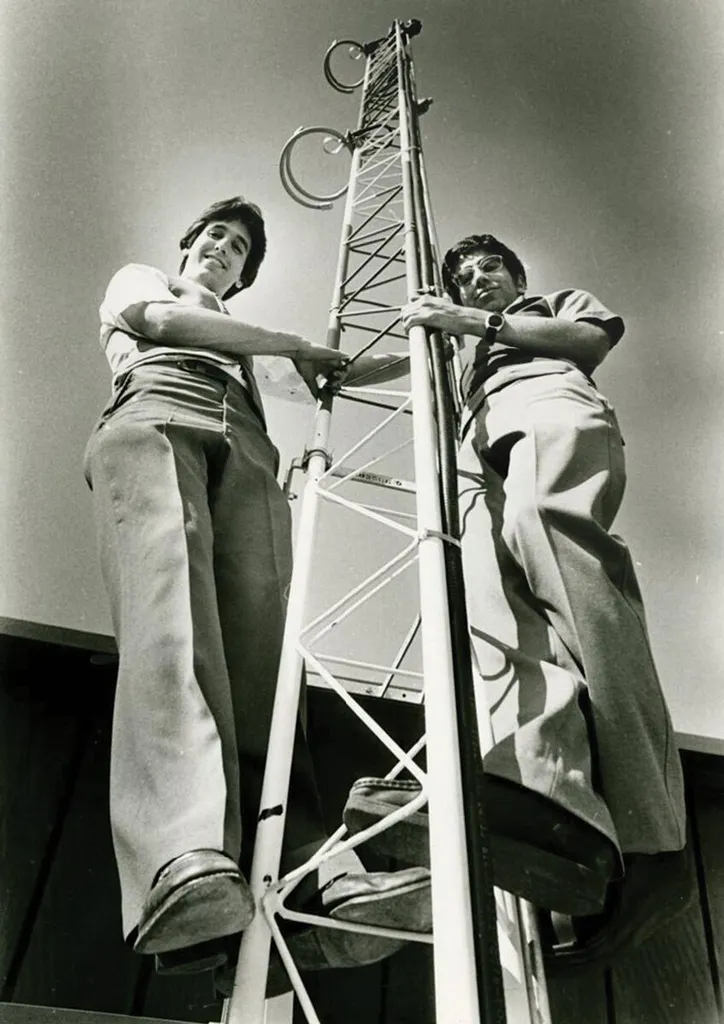
FM OR BUST // After more than five years of bidding,
two FCC rejections and a two-year campaign called “FM or Bust,” WMUC
finally secured a secondary, Class-D FM license at the bottom of the FM
dial: 88.1. The FM station would share digs with WMUC’s AM 650, which
continued to run until 1999 on the third floor of the South Campus
Dining Hall—one of the highest points on campus. During the summer of
1979, staff readied the station for the inaugural FM broadcast.
“The
tower could only be 30 feet; anything taller would interfere with the
nearby College Park Airport,” says Andrew Coile ’82, who helped erect
the transmission tower. Coile and Larry Pollack ’80 painted it
themselves in the required alternating white and aviation orange. WMUC’s
10 watts were a whisper compared to the 50,000-watt mega-reach of its
commercial peers, an issue that created new problems for the station
decades later.
On Sept. 10, 1979, program manager Marty Rosenstock ’81 launched a new era for WMUC with Joni Mitchell’s “You Turn Me On, I’m a Radio.”
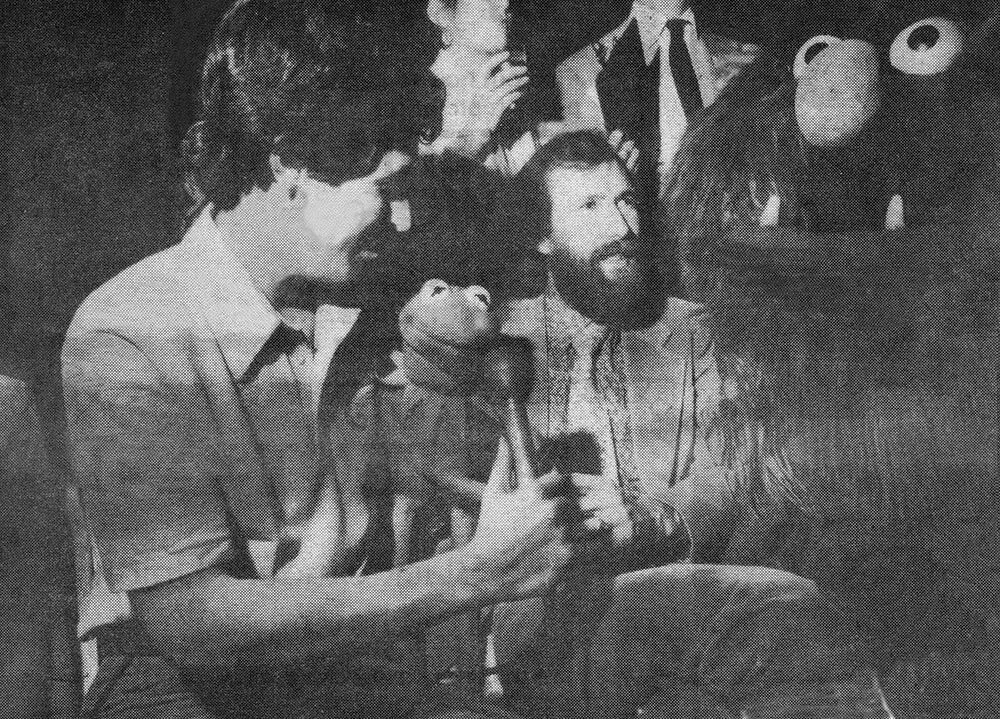
JIM HENSON // In 1979, Rosenstock tapped a friend working Homecoming, where Muppeteer Jim Henson ’60 would sit as grand marshal, with a covert mission: to sneak him into the grandstand for an impromptu interview. Rosenstock managed a quick chat, not with Henson, but his green sidekick. “I was holding the microphone up to Kermit’s mouth instead of Henson’s because he had just made him come so to life,” he says.
1980s - 1990s
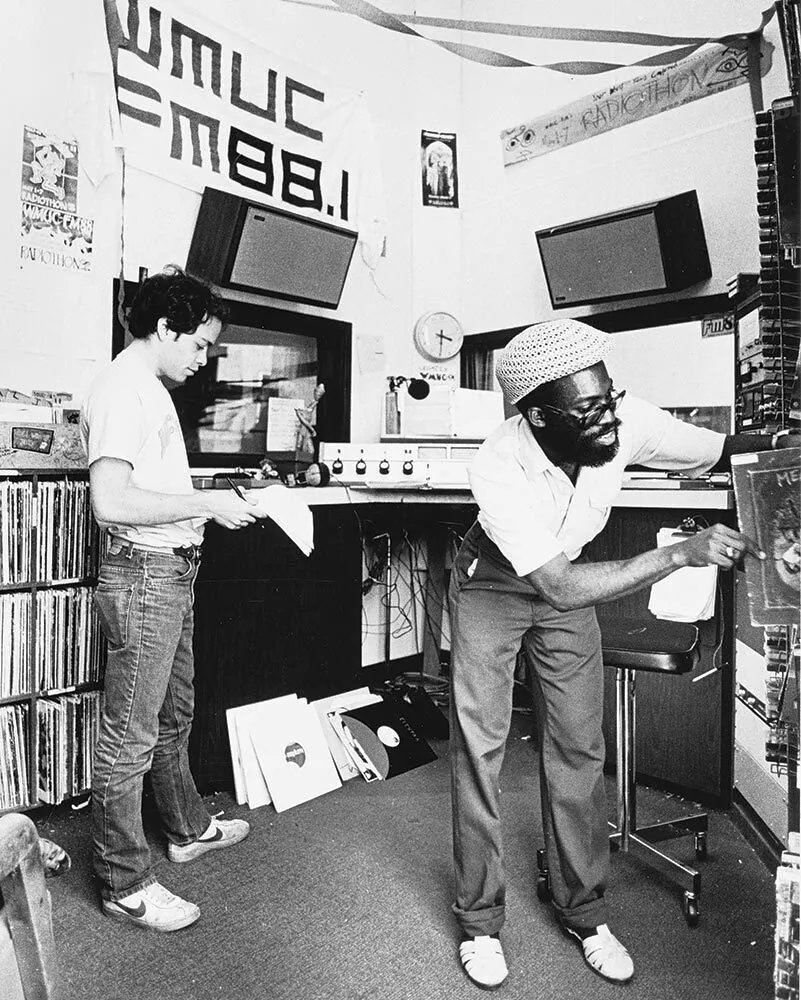
FREE-FORM RADIO // After a hard lobby by staff, WMUC
planted its FM flag in a free-form format that by the early 1980s
allowed DJs to design their own shows and highlight lesser-known
artists; they embraced the emerging D.C. hardcore scene along with other
eclectic and underground acts.
“It was just a time when everyone was
playing their favorite stuff,” says former DJ Melinda Johnson. Over the
years, metal, hip-hop, emo and indie music found homes at WMUC.
“It feels like a public service,” says Laura Schnitker Ph.D. ’11, who developed an exhibit on WMUC’s history for Hornbake Library in 2013. “It’s more important than ever that we still have live DJs curating shows of all kinds of eclectic music for people who are genuinely curious.”
BIG PIMPIN’ IN STUDIO // In 1993, WMUC’s “Soul Controllers Mix Show” hosts emerging rap star Canibus and a then-unknown Jay-Z.

THIRD RAIL RADIO // During the alternative insurgence of the early 1990s, record labels pitching the next Nirvana flooded stations like WMUC, with stacks of demos coming in weekly. With Washington, D.C., limited to a handful of venues like the Black Cat or 9:30 Club, bands looking to land a local show found an ally in WMUC’s “live room,” a bare-bones space that could accommodate an audience but also broadcast. Sporadic at first, it became appointment listening in 1996 when Eric Speck ’97 launched “Third Rail Radio,” a weekly in-studio music show. Over the years, “Third Rail Radio” has hosted emerging—and now established—artists like Elliott Smith, Car Seat Headrest and Mitski.
“The week before my first daughter was born, my band went back to WMUC and performed a solo set on ‘Third Rail Radio,’” says former DJ John Davis ’99, curator of Special Collections in Performing Arts for UMD’s Michelle Smith Performing Arts Library. “My wife was there, who I first met at the station, and there was so much power to that moment: a little bit of sadness to one ending, but gratitude to the journey and excitement for this whole new part of my life about to begin. And it was cool for it to be happening in this place where so much stuff in my life happened.”

2000s - 2010s
SIGNAL BOOST // WMUC’s 10-watt FM signal was strong enough to reach only a few miles beyond campus. Also situated at 88.1—but 30 miles north—was WYPR-FM, another college radio station run by Johns Hopkins University, which was converted into Baltimore’s NPR member station in 1995. In 2006, the FCC approved WYPR’s petition for a 5,500-watt power boost and redirection south, securing a firmer grip on the Baltimore-Washington corridor and nearly snuffing out WMUC. “You could be in a dorm on South Campus right next to the station and not be able to pick it up,” says former GM Scott Maxwell ’09. In 2016, then-station manager Jane Lyons ’18 rekindled conversations for more wattage and a new frequency; with the help of state Sen. James Rosapepe, administrative adviser Steve Gnadt and the station staff that followed, WMUC eventually secured 30 watts and a new spot on the FM dial in 2022 at 90.5.
LAUNCH OF DIGITAL // In 2008, station staff cobbled together equipment to transform the abandoned AM control room into WMUC’s first digital streaming station. New DJs now hone their chops on the digital station, rather than the graveyard shift, before graduating to a primetime FM slot.
PUMPED-UP HIT // In November 2010, WMUC played “Pumped Up Kicks” by Foster The People, marking its U.S. terrestrial radio debut; it later spent eight consecutive weeks at No. 3 on Billboard.
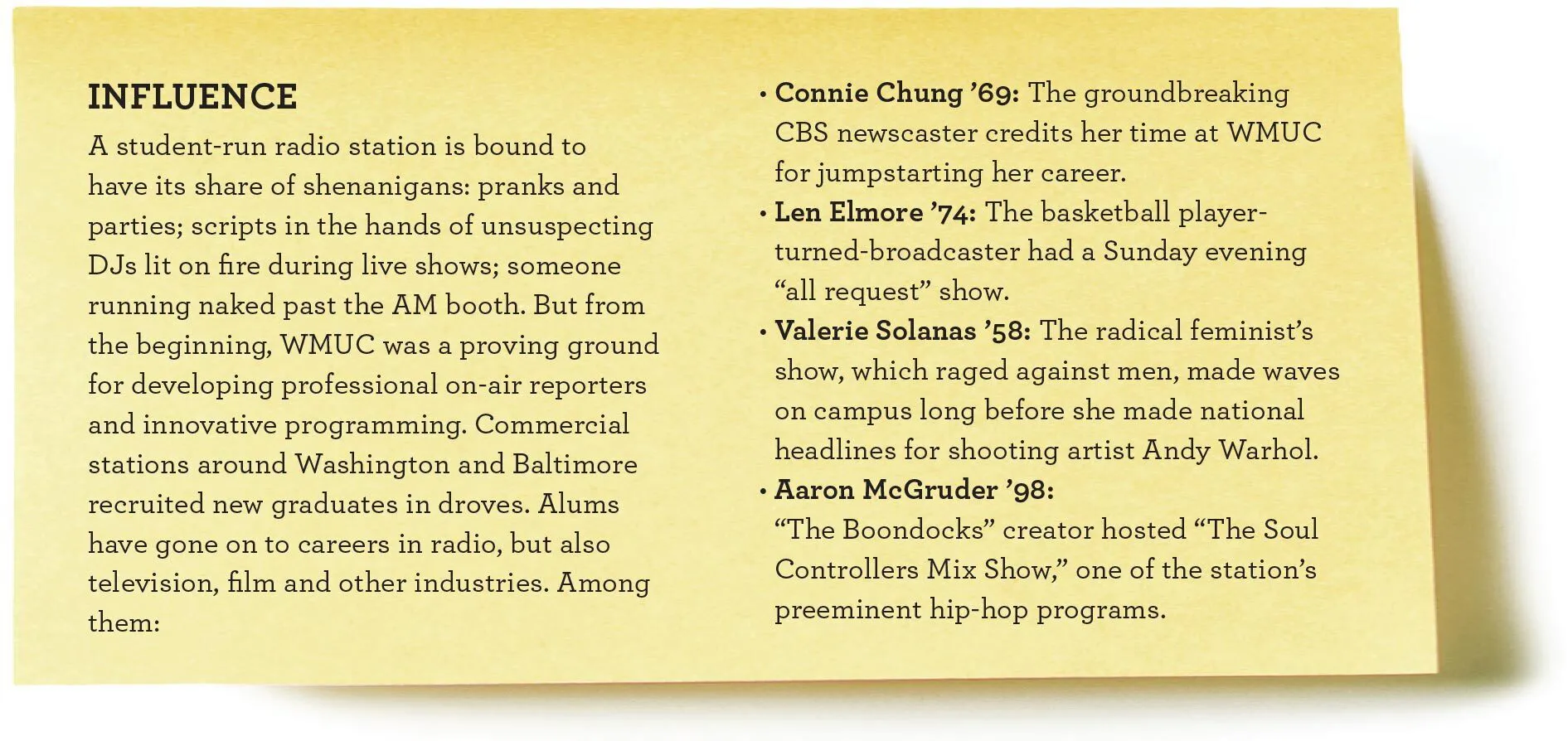
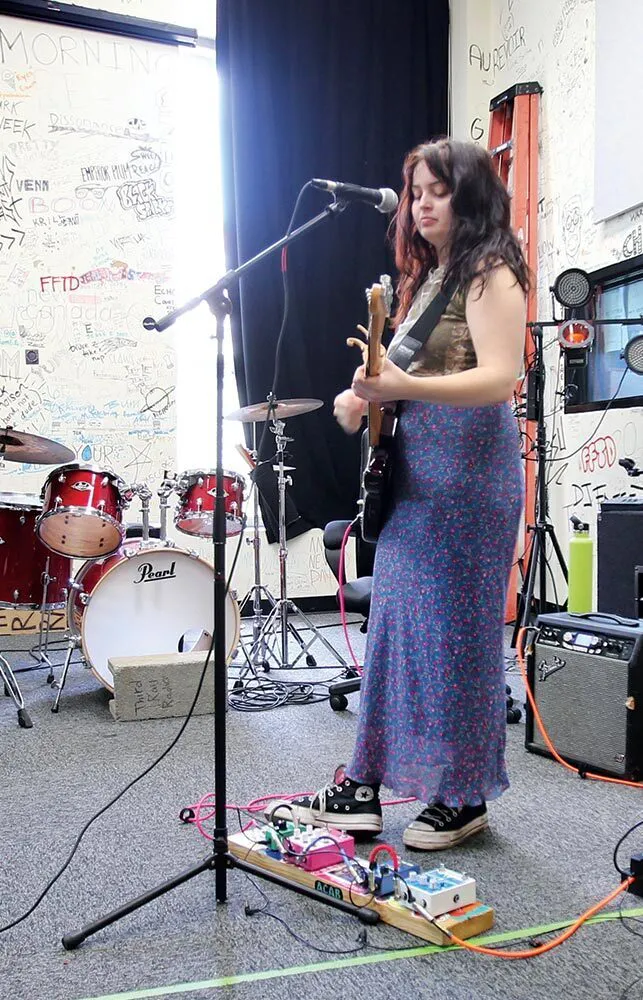
AMERICAN GRAFFITI // Since the station’s move to
South Campus Dining Hall in 1974, DJs, visiting artists and staff have
left their mark on the station’s walls. In 2014, Facilities Management
upgraded the studio walls and carpet, with the agreement that tagging
would be limited to only the “live” room, a performance space frequented
by local and visiting bands (look closely and you’ll find signatures by Ice Cube, Alvvays, Alex G and others).
A short time later, the staff painted the lobby walls in chalk paint for graffiti as free-form as the music; each semester, the walls are scrubbed clean using Coca-Cola (“the only thing powerful enough to remove all traces of chalk,” says current General Manager Aidan Appelson ’23) for the next batch of station DJs.
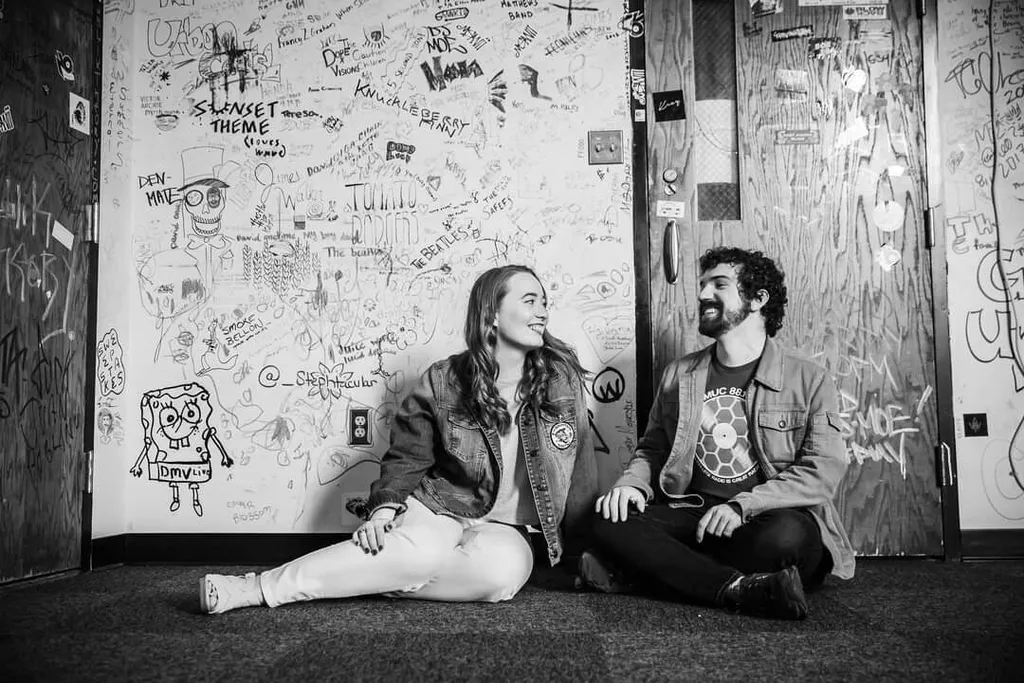
ALL STAR DAY // More than 15 years after dominating American radio as the 1999 song of the summer, Smash Mouth’s “All Star” had a brief resurgence in College Park. WMUC staff, who had made the single a regular feature of parties in the Knox Box apartments, declared Feb. 22, 2015, “All Star” Day, commencing a mind-numbing 24-hour marathon of the song on repeat, occasionally interspersed with cover versions; one DJ managed to get Smash Mouth’s drummer, Kevin Coleman, on the phone for an interview and to record a station ID. Lyons, who did the graveyard shift that day, remembers listening in for most of the marathon. “The song would end and there would be these few seconds of silence. For a minute you’d think, ‘Maybe it won’t be “All Star”?’ But it always was.” When Lyons married her husband and fellow WMUC DJ Jonathan Raeder ’15 years later, the couple played “All Star” right after their first dance.
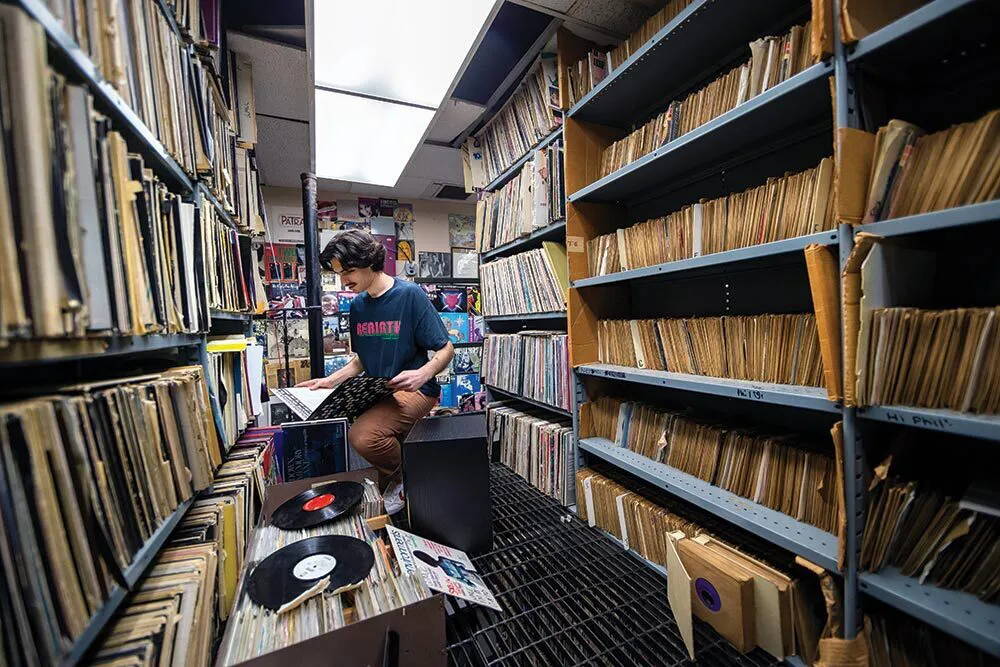
THE RECORD LIBRARY
Thought to be the second
largest on the East Coast, WMUC’s record library is currently maintained
by two student librarians, who catalog new entries, keep things
organized and move older albums to a separate “valuable” record room.
While cameras now keep watch on the vast collection of over 70,000
items, that wasn’t the case in earlier decades, when staff regularly
pilfered vinyl for personal use, leaving behind the jackets. Over the
past few years, station staff have built a collage of these empty
jackets on the record room wall. “During my sophomore year, I gave a
tour to my roommate’s dad, who was a DJ at WMUC,” says Appelson. “He saw
the mural and pointed out all the records he stole.”
“I spent the entire summer of 2006 cataloging the record library into a searchable database, which had never been done before,” says former GM and DJ Anton Kropp ’07. “We typed in every song, every artist by hand. This was long before the cloud; we were running everything on a local machine in the server room. The radio station is hit by lightning a lot and occasionally you’d have these power surges. One night, it got fried one too many times. We lost everything. Now as a software engineer, I tell all of my people to back up everything; you never know when you’ll be struck by lightning.”
NOW
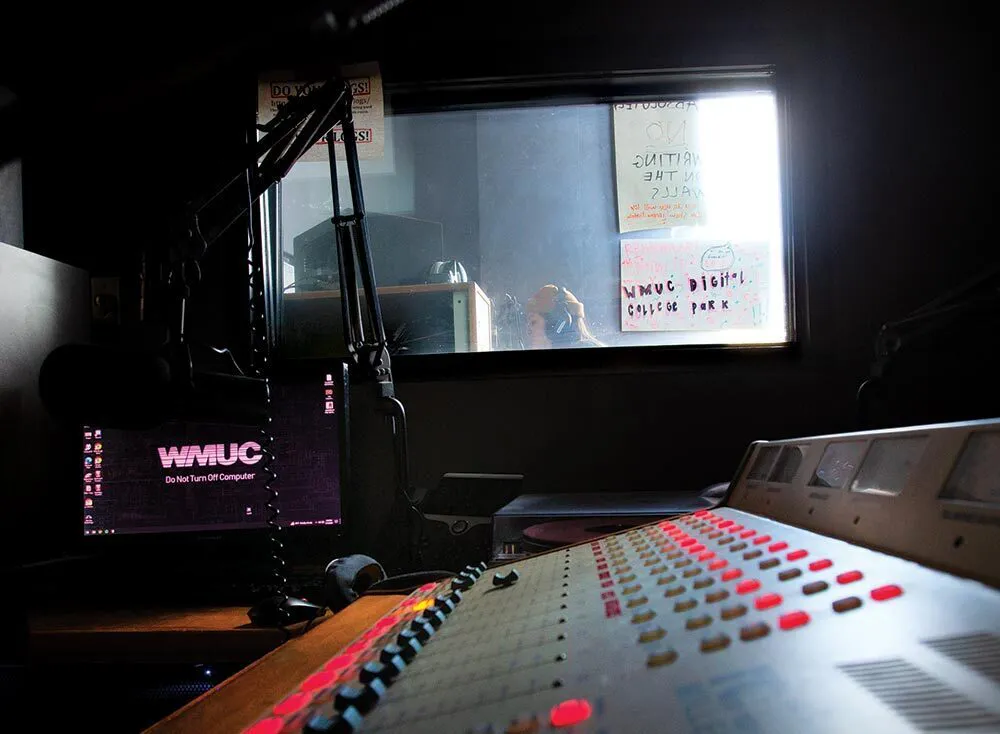
LONG LIVE WMUC // In an era where college radio stations have largely been sold off, stations like WMUC are notable purely for surviving. “WMUC has become an endangered species,” says Patchen Mortimer M.F.A. ’03, who, along with several other alums, still hosts a weekly WMUC show. Its endurance is largely due to the legions of students who took up the mantle over its 75 years, but also because of the university’s ongoing financial and operational support. WMUC, he says, is the anarchistic, artistic yin to the university’s academic yang—and a space for a lot of people who don’t fit in. “It’s loners, punks and weirdos for sure, but they’re communing with frat boys and female business majors,” he says. “That synthesis is what makes us better.”
In September, WMUC welcomed a new crop of DJs looking for the freedom to spin records and make their community through music—with the hope that the kids will keep listening. “It’s a magical feeling of, Oh, wow, this is the community that I’m part of,” says Appelson. “And we have momentum now.”
Which hits earned heavy rotation at WMUC? Former DJs share their favorites for our Ultimate Spotify List.
For more history, pictures and unbridled nostalgia, visit “Saving College Radio: WMUC Past, Present and Future,” an online exhibit from University of Maryland Libraries at exhibitions.lib.umd.edu/wmuc.
Got another WMUC story? Our lines are open at terpfeedback@umd.edu.
This story is featured in the Fall 2023 issue of Terp magazine. Find all the stories online at terp.umd.edu.
Topics
Campus & Community